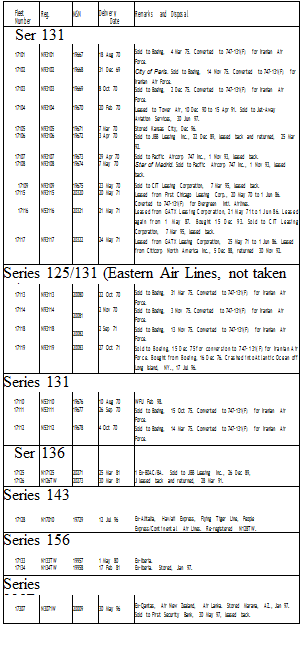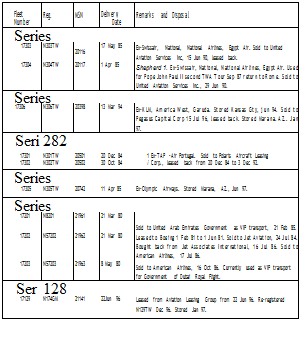Wide-Bodied Era


The Big Boeing
Just as it had done in 1955, when Pan American ordered 45 jet airliners, to launch the Jet Age in earnest, Juan Trippe did it again in 1965, by persuading the Seattle manufacturer to build the Boeing 747, another airliner that was twice as big as its predecessor. Paradoxically, Pan Am was to acquire too many 747s too quickly, but having been persuaded, Boeing went on to build more than a thousand “Jumbo Jets”—and is still building them 35 years later, an amazing tribute to a great design.
On 2 September 1966 T. W.A. placed a large order for Boeing aircraft and this included 12 747s. At the time, like most large airlines, confidence was high. During that summer, service had been resumed to Bangkok, and extended to Hong Kong. On 6 April 1967 the last Constellation was retired from domestic service and on 11 May the very last of that famous airliner was withdrawn from overseas routes. T. W.A. was the first major U. S. domestic airline to become all-jet. In the same year, riding high, it acquired the Hilton Hotel chain on 9 May, and placed another multi-million dollar Boeing order on 18 October, to augment the 747 fleet to 34. T. W.A.’s Jumbo Jets entered service on 25 February 1970, on the premier transcontinental route, Los Angeles – New York, and on 18 March on the world’s most prestigious intercontinental route, New York-London.
Pacific Interlude
For several years, the Civil Aeronautics Board had been wrestling with two important issues, the trans-Pacific and the associated Hawaii Route Cases. The U. S.trans-Pacific traffic had hitherto been shared between Pan American and Northwest to Asia, Pan Am only to Australasia, and Pan Am, Northwest, and United to Hawaii. Now, other airlines wanted a piece of this lucrative cake, and T. W.A. was one of them. President Johnson signed the Pacific Route Case on 19 December 1968 and the Hawaii Case on 4 January 1969, just before he left office. The incoming President Nixon promptly amended the choice of airlines and routes, but T. W.A. nevertheless received its share, and opened service on 1 August 1969. This enabled the airline to complete a round-the-world service, with Boeing 707s, on 31 October 1971.
The route was not as successful as expected because of strong competition and the consequent excessive capacity offered. Accordingly, T. W.A. and Pan American entered into a route standardization agi’eement on 16 October 1974, and T. W.A. suspended its Pacific route on 2 March 1975.
Capacity Sharing
The Pacific agreement with Pan Am was symptomatic of a problem that had resulted from the enormous increase in the capacity offered world-wide by the influx of the 360-seat 747s, augmented by the 270-seat Douglas DC-10 and Lockheed L-1011 tri-jets. The problem was also acute in the U. S.A., where, for example, three airlines all offered a 9 a. m. departure from New York to Los Angeles—all at a disastrous 35% or so load factor.
On the initiative of Mel Brenner, T. W.A.’s advocate for common sense in a strictly regulated environment which was supposed to encourage competition, the C. A.B. and the Justice Department agreed, on 21 December 1970, to a capacity scheduling agreement, so that the airlines could continue to compete without cutting each other’s throats. This sensible T. W.A. initiative was appreciated on all sides, and was a harbinger of an even more liberal approach to the problem, one that was solved by the Airline Deregulation Act, signed by President Carter on 24 October 1978. T. W.A. would, in years to come, face fresh challenges, fierce competition, and threats to its very existence.(p. 90)










